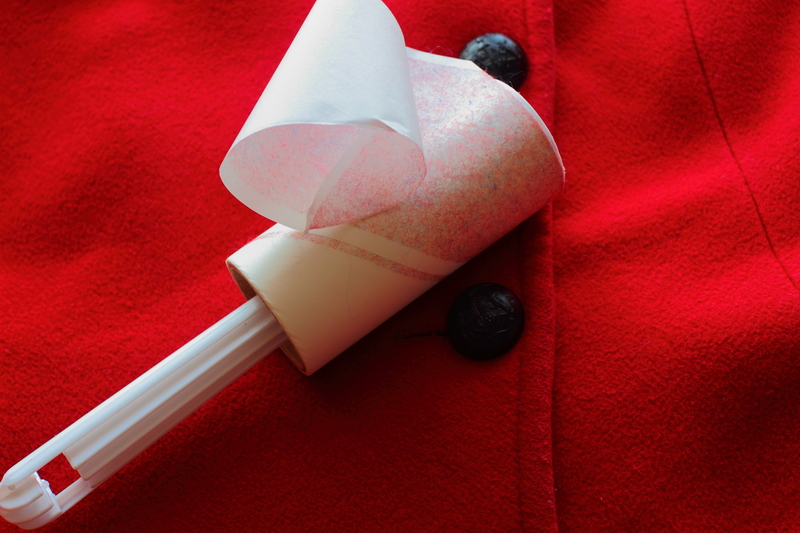Say Goodbye to Burnt Stovetop Residue with These Tips
Posted on 11/09/2025
Say Goodbye to Burnt Stovetop Residue with These Tips
Is your kitchen plagued by stubborn burnt residue on your stovetop? Struggling to maintain that sparkling-clean look after every meal? You're not alone! Burnt food and residue can make even the most beautiful kitchens look neglected and uninviting. In this comprehensive guide, you'll learn tried, tested, and effective stovetop cleaning tips to restore your cooking surface to its former glory.

Why Does Burnt Stovetop Residue Happen?
Before diving into practical cleaning methods, it helps to understand why burnt residue accumulates on your stovetop. Whether you have a gas stovetop, electric coils, or a glass-ceramic cooktop, bits of food, oil splatters, and spilled liquids can easily get scorched if left uncleaned during cooking sessions.
- High Cooking Temperatures: Intense heat can instantly bake spills onto the surface.
- Delayed Cleaning: Letting the residue sit allows it to harden and become more difficult to remove.
- Poor Cleaning Techniques: Using unsuitable cleaning materials can spread the mess or even damage the stovetop.
Luckily, you don't need to resign yourself to unsightly stains. Let's explore proven methods for removing burnt residue from stovetops with ease.
Essential Tools and Supplies for Effective Stovetop Cleaning
Before starting, gather the right supplies. Using proper tools not only ensures good results but also prevents damage to your stovetop's surface. Here's what you might need:
- Microfiber cloths (gentle and effective on all surfaces)
- Non-abrasive sponges or scrub pads
- Baking soda
- White vinegar
- Lemon juice
- Plastic or silicone scraper
- Dish soap
- Commercial stovetop cleaner (glass or stainless steel as needed)
- Paper towels or reusable cleaning towels
- Gloves (to protect sensitive skin)
Pro Tip: Check your stovetop's manufacturer's care instructions before using new products. Some surfaces may be sensitive to acidic or abrasive cleaners!
Step-By-Step Guide: How to Remove Burnt Residue from Your Stovetop
1. Act Fast - Clean Spills Immediately
The best way to prevent stubborn burnt-on residue is to clean up spills as soon as possible. As soon as your stovetop cools down, use a damp microfiber cloth to mop up sauces, oils, or food particles. This simple habit can help you avoid most burnt residue issues altogether.
2. Initial Loose Debris Removal
Use a dry paper towel or soft brush to sweep away any loose crumbs or food pieces. Removing these first makes the wet cleaning process much easier and prevents spreading grime across the surface.
3. Make a DIY Baking Soda Paste
Baking soda is a gentle, natural abrasive that works wonders on tough stains but won't scratch your cooktop. Here's how to use it:
- Mix about 4 tablespoons of baking soda with enough water to create a thick paste.
- Apply the paste generously over burnt-on stains on your stove's surface.
- Let the mixture sit for a minimum of 15 minutes (longer for tougher stains).
- Use a damp sponge to gently scrub the paste into the affected areas.
- Wipe away the residue with a clean cloth and repeat as needed.
4. Vinegar Power for Stubborn Burnt-On Messes
White vinegar is excellent for breaking down burnt residues and tackling lingering grease. Here's an effective method:
- Spray the surface (or pour a small amount) with pure white vinegar.
- Allow it to fizz and react for several minutes. The reaction helps lift and dissolve burnt food and stains.
- Gently wipe using a soft sponge or microfiber cloth in a circular motion.
- Rinse thoroughly with damp cloth to neutralize the smell.
5. Use a Plastic Scraper on Stubborn, Hardened Spots
For particularly stubborn, thick, or charred residue, a plastic or silicone scraper can be invaluable. Avoid metal scrapers as they easily scratch glass or ceramic cooktops. To use it safely:
- Hold the scraper at a 45-degree angle and gently work beneath the residue.
- Apply steady, gentle pressure; never use force, as this can damage the surface.
- Wipe away loosened debris with a moistened cloth.
6. Lemon Juice for a Fresh Clean
Lemon juice not only helps cut through grease but leaves your stovetop smelling fresh. Simply apply a small amount of lemon juice mixed with water and let it sit for a few minutes before scrubbing and wiping clean.
7. Deep Cleaning Techniques For Different Stovetop Types
- Gas Stovetops:
- Remove grates and burner covers; soak them in hot, soapy water for 30-60 minutes.
- Use a brush or sponge to scrub away blackened residue.
- Clean under the grates and around the burners with a damp cloth and mild detergent.
- Electric Coil Stovetops:
- Unplug coils and remove them from the stove before cleaning.
- Wipe with a damp cloth and mild soap; never immerse coils in water.
- Clean the drip pans separately with baking soda paste for tough stains.
- Glass or Ceramic Cooktops:
- Use a specifically formulated glass stovetop cleaner if available.
- Baking soda and vinegar combo works well, but never use harsh abrasives.
- Buff dry with a microfiber cloth for streak-free shine.
8. Keeping Your Stovetop Residue-Free: Maintenance Tips
Prevention is always better than cure! Save time and keep your stove looking spotless with these maintenance tips:
- Wipe down after cooking: Don't let spills linger--clean them once the surface is cool.
- Use splatter guards or lids: Prevent food and oil from reaching the cooktop in the first place.
- Perform weekly deep cleans: Dedicate time each week to thoroughly clean all stovetop components.
- Check burners and gas ports for blockages: Clogs can cause uneven heating and burn more food onto the surface.
- Replace drip pans when needed: Heavily rusted or damaged pans no longer protect your cooktop.
Commercial vs. DIY Stovetop Cleaners: Which to Choose?
With so many products on the market, which should you trust? While homemade recipes (like baking soda and vinegar) are safe, inexpensive, and eco-friendly, commercial stovetop cleaners often offer quicker results and special formulations for specific cooktop surfaces.
- DIY Cleaners: Great for everyday messes, environmentally friendly, and budget-approved.
- Commercial Cleaners: Ideal for heavily soiled surfaces or when you need to remove residue fast. Always check if the cleaner is approved for your stovetop type.
Always rinse any cleaning solution thoroughly to avoid streaks or film buildup, especially on glass cooktops.
Common Mistakes to Avoid When Cleaning Burnt Stovetop Residue
- Using abrasive pads or steel wool: These can permanently scratch glass or ceramic cooktops.
- Using bleach or harsh chemicals: Certain chemicals may react with your cooktop's material, causing discoloration or erosion.
- Not letting stain-lifting agents sit: Giving time for baking soda, vinegar, or commercial solutions to work is essential for stubborn residue removal.
- Forgetting to rinse thoroughly: Leftover cleaner residue can attract dust and grime.
- Cleaning while hot: Always allow the stovetop to cool down; rapid temperature changes can cause glass or ceramic to crack.
How to Deal with Persistent or Old Burnt Residue
Some stains seem determined to stay no matter what you try. If you have old, caked-on stovetop residue, here are enhanced methods to try:
- Soak the stain: Lay a kitchen towel soaked in hot soapy water or vinegar directly on the burned area for 30 minutes before scrubbing.
- Repeat applications: Stubborn spots may require two or three treatment cycles.
- Use a stovetop razor (for glass only): Some glass cooktops allow for a special stovetop razor to carefully scrape away residue--always follow manufacturer guidelines.
When Should You Call a Professional?
If nothing works and you're worried about damaging your appliance, don't hesitate to contact a professional cleaning service or your appliance manufacturer. Persistent stains on delicate or expensive stovetops are better handled by experts.

FAQs about Cleaning Burnt Stovetop Residue
-
Q: Can I use oven cleaner on my stovetop?
A: Most oven cleaners are too harsh for stovetops, especially glass and ceramic ones. Always use products designed for your surface. -
Q: Is it safe to use vinegar on all stovetops?
A: Vinegar is safe for glass, ceramic, and some metal surfaces but should be avoided on aluminum to prevent discoloration or pitting. -
Q: Can burnt stains be prevented entirely?
A: While not always possible, prompt cleaning and regular maintenance can drastically reduce the chance of burnt residue forming. -
Q: What's best for stainless steel stovetops?
A: Use mild dish soap, specialized stainless steel cleaner, and buff with a dry, soft cloth along the grain to avoid streaks.
Your Stovetop Can Shine Again: The Final Word
Say goodbye to burnt stovetop residue--forever! By following the tips and techniques outlined above, you can keep your kitchen's most vital surface sparkling clean and always ready for your next culinary adventure. Remember, consistency is key; a few minutes of care after each use will save you hours of scrubbing in the long run.
Ready to tackle the residue? Use these expert cleaning strategies to win the battle against stubborn stovetop stains and reclaim your kitchen's shine. For more helpful kitchen and home cleaning advice, explore our other guides--and share your own stovetop cleaning tips with our community below!
- Try these methods today and enjoy a gleaming, residue-free stove!
- Protect your investment by using the right tools for every stovetop type.
- Transform your cooking experience with these sustainable, effective tips.



